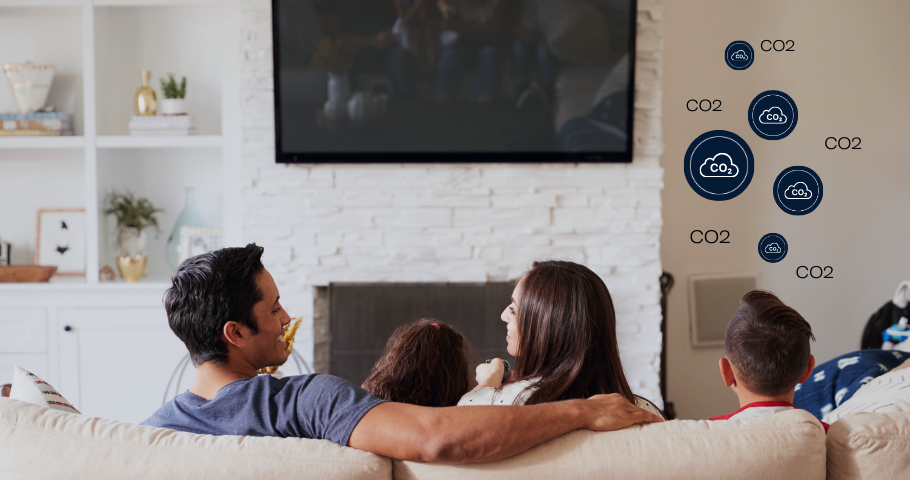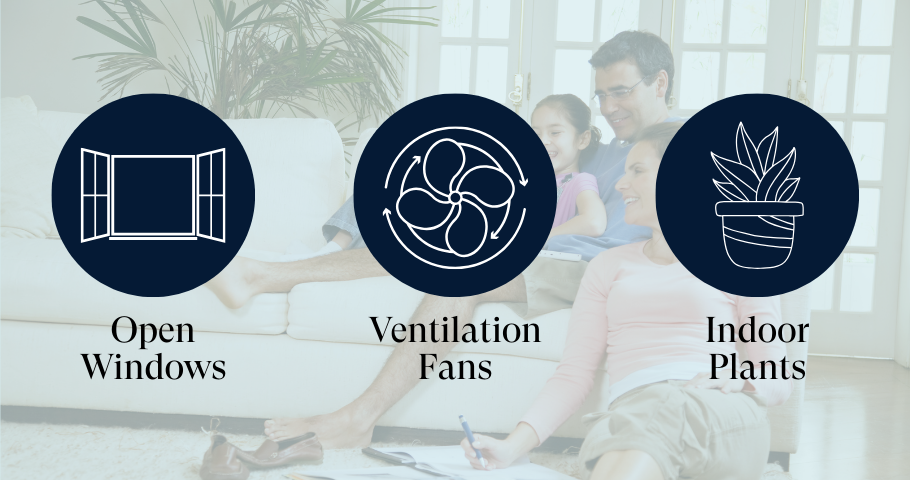The Secret Fog in Your Living Room: How elevated CO2 Affects Brain Performance
You sit down at your kitchen table to tackle emails, pay bills, or maybe just check the news. By 10 a.m., your thoughts feel like molasses. Coffee hasn’t helped. Your laptop seems slower than usual. The culprit? Not your workload, not the kids, not even the 2 p.m. Zoom call—the air you’re breathing. Did you know invisible, silent CO2 affects brain performance – often without you noticing the signs.
Indoor CO2 accumulation can dramatically impact your cognitive performance. While we obsess over lighting, noise, and ergonomics, the invisible fog of CO2 quietly drags down focus, mood, and mental clarity.
How Elevated CO2 Affects Brain Performance & Steals Your Focus
Your living room might feel perfectly fine, but CO2 has a sneaky way of creeping up on you. Closed windows, multiple people working from home, and streaming marathons all contribute to indoor CO2 buildup. Harvard researchers found that levels as low as 1,000 ppm can reduce decision-making performance by up to 50%. That’s like watching your brain run a half-speed streaming service while you think it’s full HD.
Here’s a parable: imagine your neurons as a delicate houseplant. Left in stagnant air, they droop. Once you refresh the space with clean air, they perk right back up.
In fact, elevated CO2 doesn’t just reduce focus—it can dull memory, slow reaction times, and even dampen creativity. If your living room feels like a foggy theater, it’s not just a feeling—it’s measurable cognitive impact. Curious how your brain responds to CO2? SMARTView AQI can help you track it, so you’ll know exactly when your home turns into a foggy balcony row. This is a practical way to understand how indoor CO2 can fog your brain while keeping life flowing.
Why Your Living Room Could Be a Brain Fog Zone
So why does CO2 accumulate in the first place? Homes aren’t sealed from the outside for nothing—but that energy efficiency comes with trade-offs. Add a family movie night, a couple of remote workers, or even a single long afternoon of gaming, and your living room air becomes a slow-moving cognitive hazard.
Consider the Denver family who noticed their kids were unusually drowsy during homework. The solution wasn’t more tutoring; it was a simple CO2 monitor revealing levels hovering around 1,200 ppm. Open a window, run the fan, and suddenly math made sense again. Small changes with big results to end how CO2 affects brain performance.

The Cognitive Cost: What Your Brain Loses to CO2
Elevated CO2 doesn’t just make you feel sluggish—it impacts your very ability to think. Symptoms include:
- Sluggishness and reduced attention span
- Irritability
- Poor decision-making
“Most people underestimate how much indoor CO2 affects mental clarity,” says Dr. John Doe, environmental health researcher. “Even moderate CO2 increases can mimic the effects of mild sleep deprivation. Imagine trying to perform at your best while your brain feels foggy and underpowered.”
Take a moment: think of your mind as a streaming service. You expect HD playback, but CO2 buildup is the buffering wheel spinning endlessly.
Solutions for Fog-Free Thinking
The good news? You don’t need a full HVAC overhaul or expensive gadgets to regain mental clarity. Simple steps make a huge difference:
- Open windows strategically – Even 10 minutes can reset CO2 levels.
- Ventilation fans – Place in high-use rooms to keep air circulating.
- Small indoor plants – Use as a visual cue: if they droop, the air might be stale.

SMARTView AQI Science Spot
Want real-time guidance without guessing? SMARTView AQI tracks CO2 continuously, shows four-day forecasts, and alerts you when indoor air approaches cognitive-sabotaging levels.
Fun breakdown: Your living room is like a stage. When CO2 spikes, your brain actors fumble lines. SMARTView AQI shines the spotlight back on center stage—so every thought performs perfectly.
Tip: By tracking CO2 alongside PM2.5, TVOCs, and humidity, you get a complete picture of your home’s cognitive climate. No guesswork. Just actionable insight, helping your living room become your brain’s favorite spot again.
Track CO2 and Stay Sharp with SMARTView AQI
Integrating a CO2 monitoring routine is easier than it sounds. You don’t need to be a full-time air scientist. SMARTView AQI makes it simple to see exactly when your brain is at risk of foggy zones. The dashboard shows trends, flags problem areas, and even lets you plan your ventilation strategy.
Tracking your home’s air quality has never been this intuitive or useful. SMARTView AQI transforms invisible problems into visible actions, so you can reclaim focus without thinking about the science behind it.
Sleep, Exercise, and Mood: The Hidden CO2 Connection
As poor CO2 affects brain performance, the impacts aren’t limited to work or homework. Sleep, exercise, and overall mood are all subtly influenced by indoor air:
- Sleep: Elevated CO2 can disturb sleep, leaving you groggy the next day (ASHRAE Journal, 2017). Sleep smarter with indoor air tips to wake refreshed.
- Exercise: Even indoor cardio performance drops when CO2 is high. Breathe better during workouts to keep your energy flowing.
- Mood: Sluggishness and irritability can often be traced to indoor air quality, sometimes more than caffeine or screen time.
By understanding these subtle connections, you can take steps that improve more than just focus—they enhance overall well-being.
Bringing It All Together
The air we breathe isn’t a background player—it’s the director of cognitive performance, mood, and sleep. Elevated CO2 acts like a fog machine, dulling the edges of our daily lives.
Small tweaks—open windows, a little ventilation, tracking CO2 with SMARTView AQI—can dissolve the fog and restore mental clarity. Just as sunlight clears morning mist, fresh air clears the mental haze, making your home a brain-friendly zone.
Curious how indoor air affects more than focus? Sign up free for SmartView AQI to track CO2, PM2.5, TVOCs, and more—so you can breathe better, think sharper, and live smarter.
